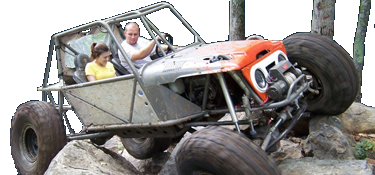bbaxter51
Well-Known Member
- Joined
- Jun 21, 2010
- Location
- Stillwater, MN
The trend these days is to ditch the leaf sprung setups in favor for a more up to date setup. Whether you're wanting to run coil's, coil over shocks, or air shocks; you're going to need to a link setup. In this tech article we will talk about the most basic and popular link style setups; how to choose what's right for you, and where to start. We'll also talk about vocabulary you'll need and the cost involved with converting over to a link setup. Sound good? Good. If at anytime you've got questions, comments or opinions, throw them out there we'll discuss.
We're only going to discuss 2 of the most popular types of link setups in this writeup purely due to the depth and breath of the subject.
Part 1.
4 Link. This setup if the easiest for people to understand and wrap their heads around the concept of. It's exactly what the name implies. There are 4 link bars mounted from the axle to the frame holding the axle in place both forward, back, and side to side. The traditional way the 4 link is setup on off road rigs is to have 2 links holding the axle from moving front to back and 2 links mounted in a triangle shape, used to locate the axle from side to side. This is an example of a typical 4 link setup in the rear of a rig.

At first glance, it doesn't look like 4 bars would be able to keep an axle in place under a vehicle with all the stress the power of the engine and the size of the axle and tires; but you have to know, that strength is in shapes, not in size. One of the strongest shapes is the triangle, and that's what we're trying to accomplish with the 2 upper bars in the V pattern. In order to gain enough strength of the the triangle shape, there's a magical number we're searching for and that is 40 degrees. Meaning add up the angles from the upper and lower links, it needs to be 40 degrees or more in total to properly hold the axle in place under your rig. Think how a scissors lift works, same concept here when we're talking strength in holding the axle in place.
Up next, 3 links.
We're only going to discuss 2 of the most popular types of link setups in this writeup purely due to the depth and breath of the subject.
Part 1.
4 Link. This setup if the easiest for people to understand and wrap their heads around the concept of. It's exactly what the name implies. There are 4 link bars mounted from the axle to the frame holding the axle in place both forward, back, and side to side. The traditional way the 4 link is setup on off road rigs is to have 2 links holding the axle from moving front to back and 2 links mounted in a triangle shape, used to locate the axle from side to side. This is an example of a typical 4 link setup in the rear of a rig.
At first glance, it doesn't look like 4 bars would be able to keep an axle in place under a vehicle with all the stress the power of the engine and the size of the axle and tires; but you have to know, that strength is in shapes, not in size. One of the strongest shapes is the triangle, and that's what we're trying to accomplish with the 2 upper bars in the V pattern. In order to gain enough strength of the the triangle shape, there's a magical number we're searching for and that is 40 degrees. Meaning add up the angles from the upper and lower links, it needs to be 40 degrees or more in total to properly hold the axle in place under your rig. Think how a scissors lift works, same concept here when we're talking strength in holding the axle in place.
Up next, 3 links.



